Soil temperature for planting potatoes
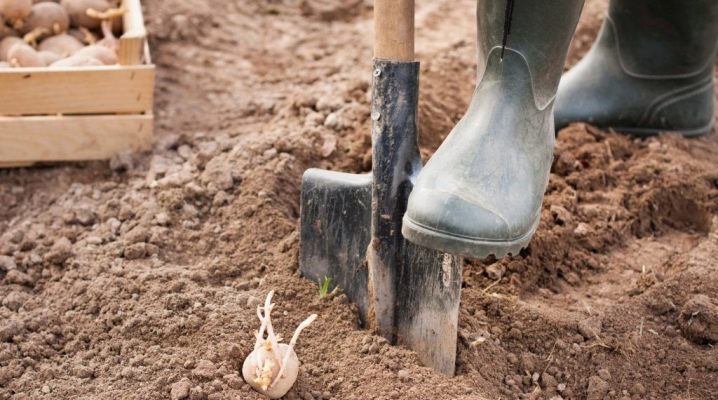
The potato is a culture native to South America, with its ancestors growing in what is now Bolivia. This is why the optimum soil temperature is important for planting potatoes. Both the quality and the number of tubers depend on it not least.

What does the earth temperature affect?
They strive to plant potatoes as early as possible, but in the conditions of the Russian Federation there is a natural limitation - the climate. In cold weather, potatoes do not germinate, the roots are active only if the soil temperature is above the minimum value - + 7 ° С.
But children can begin to grow from the tuber, without productive shoots. These small potatoes are incapable of growing on their own. The process is called fouling. The overgrown tubers are depleted and will no longer be of any use.
If the cold is combined with excess moisture, you can also not wait for the harvest. The tubers will simply rot in the ground, affected by the fungus Rhizoctonia, which is found in all soils.
Only germinated potatoes can be planted in the ground with a temperature of + 3 ... 7 ° C. The germinated one is more convenient from any side: it is more tolerant to cold, reliable, will withstand cold snaps up to + 1 ° С.
Incorrect ground temperature + dampness is one of the main mistakes of beginner potato growers and the answer to the question of why potatoes do not rise for a long time.
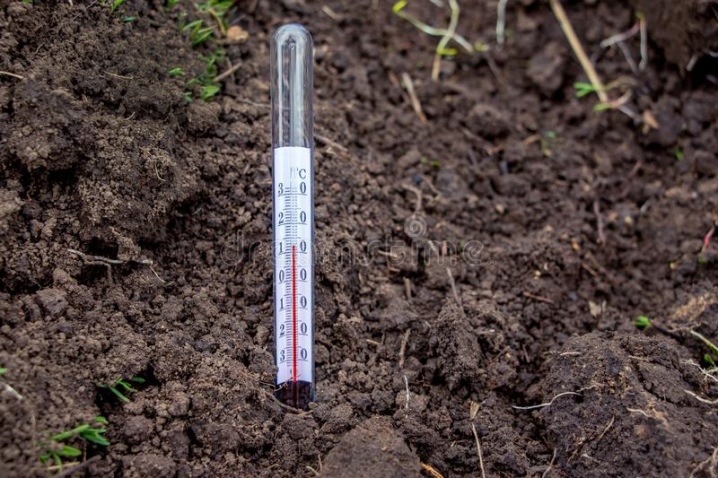
Optimal performance
To plant potatoes, you need at least + 7 ... 8 ° C at a depth of 10-15 cm. This is the minimum necessary for non-sprouted potatoes.
The germinated one can be planted from + 3 ° С, but optimally - at + 5 ... 6 ° С.
Tubers with already appeared sprouts can be planted in the soil from + 3 ° С - the plant will survive and grow, albeit slowly. Such a landing is risky, it pays off only if stable heat is expected in a few days. In Siberia and the Urals, where frosts can occur until early June, this tactic justifies itself, so it is quite possible to take a risk. The likelihood of delays in cold weather for a long time at the end of May is already quite small.
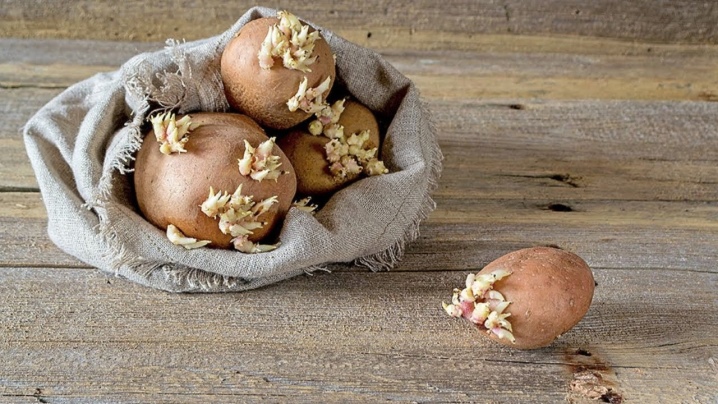
For your information. Looseness of the soil is very important for potatoes. The most favorable for this culture is the land, into which you can easily immerse a brush.
Such soil is better ventilated, warms up faster, moisture does not stagnate in it. Experienced gardeners manage to plant potatoes in Siberia in early May. With short-term frosts, potatoes that have already grown for a month do not suffer, especially if they were planted in ridges, in which the sun has time to warm the earth well. Being in the ground, it can withstand a drop in soil temperature to + 1 ° C for 2 days. Young seedlings will tolerate a drop in air temperature down to –2 ° С. As a last resort, you can spud the planting with straw or other mulching material.
Within suitable limits, the soil temperature does not need to be leveled; for potatoes, this is a desirable parameter, not mandatory. More often they mulch not in cold, but in dry areas in order to retain moisture.

Contrasting weather in spring is also observed in the Leningrad region. Here, potatoes are planted no earlier than May 15-20, and there is no point in risking planting earlier. Because the climate is not only contrasting, but also more humid than in Siberia and the Urals. Sprouted tubers planted in warm enough soil grow so well that they outrun those that were in the ground earlier, but were weakened by dampness and cold. The optimal dates for this region are considered May 20-25.
In the Moscow region, the average planting time is 1-2 weeks earlier. In the Moscow region, located at more southern latitudes, there is no influence of the ocean and the sea, the climate is temperate continental, and not transitional to oceanic, as in St. Petersburg. Potatoes do better here, they always grow better in drier areas, without dampness. Therefore, the optimal time here is mid-May. Potatoes can be planted as early as 10-15 days of May, but, of course, focusing on the conditions of a particular year. The same applies to the entire middle zone - by the third decade of May, the earth is already warming up well, excluding low-lying places.
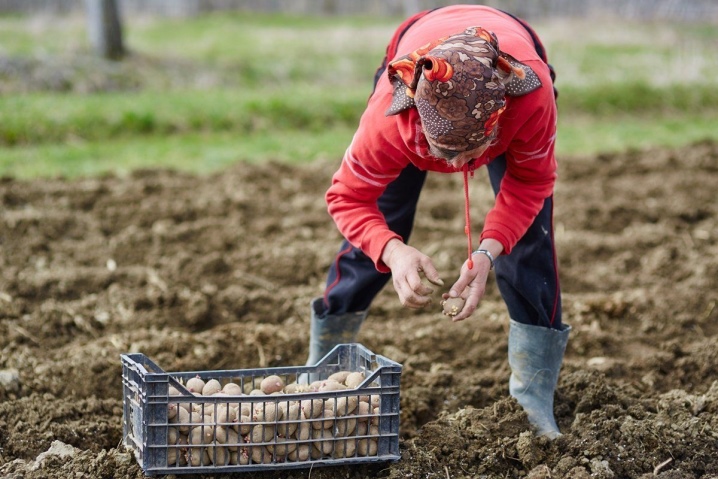
While rushing to boarding is risky, postponing it is also unprofitable. Planting in June may mean that the crop will not have time to ripen, especially when it comes to late-ripening varieties.
There are gardeners who do not want any risks. In this case, you can wait until the earth warms up to + 12 ... 15 ° С. Such indicators are established when the summer weather is stable outside - + 17 ... 20 ° С. However, there is another risk. If the soil is very light, then it will dry out, and the potatoes will need watering - up to 1 time per week. And you will also have to attend to the choice of early maturing varieties.

How can you tell if the soil is ready to plant?
The minimum required for planting tubers in open ground + 7 ° С is observed when the air temperature is above + 8 ° С. Folk omens that help determine the readiness of the soil.
-
Young leaves on a birch have grown to the size of a 5 kopeck coin. When the birch leaves have just begun to unfold, this is the earliest date.
-
Dandelion or bird cherry blossomed. Bird cherry can be considered as an indicator of the optimal time. Flowers appeared on it - it's no longer worth postponing.
-
A month has passed since the blooming date of coltsfoot.
-
The voices of cuckoos are heard.
-
Caterpillars appear, which the birds feed on.
-
The willow is covered with young foliage.
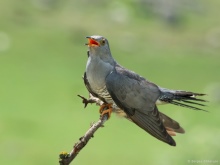

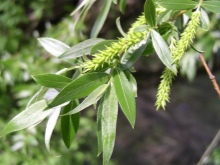
It is quite difficult to determine the readiness of the earth by touch, but it is possible.
Dig a small hole, 10 cm deep, touch the ground with your hand. Although a bare foot is better, it is often more sensitive than hands used to a variety of work. At a temperature of + 7 ... 10 ° С there will be a feeling of pleasant coolness.
You can determine if the soil is ready with a thermometer. Only here there are a few nuances. Most thermometers have a small test section. Therefore, you need to dig a hole, and at a depth of not 10 cm, but a little deeper - 15-18 cm, install a thermometer wrapped in a plastic bag, cover it with just dug earth and wait half an hour. Then the result will be more reliable. You can drop it not so deeply and wait 10-15 minutes, but then the result will differ from the actual one in a slightly larger direction.
There are special thermometers for agriculture. Models and prices are varied. There are special thermometers designed only for soil, they are inexpensive, they can cost up to 200 rubles, the design is specially thought out so that it can be easily immersed in the ground. They are made of strong plastic, resistant and durable.
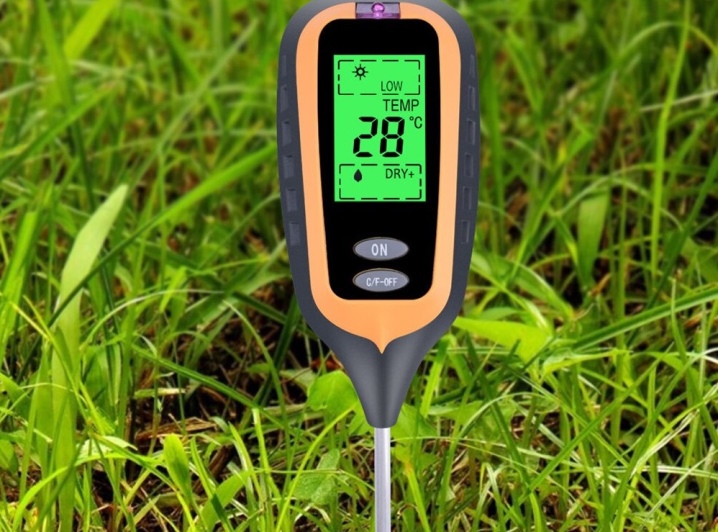
Be sure to pay attention to soil moisture. This affects the well-being of the tubers and their perception of temperature. General rule of thumb: the more humid, the warmer it should be. Even if the soil has already warmed up to + 7 ° C, it may be too damp - this will destroy the tubers. Thorough loosening, planting in ridges and the addition of a sufficient amount of components that improve the structure of the soil will help to resolve the issue. Wet sandy loam and sandy soils give up moisture faster and warm up faster, their humidity should not cause concern - they dry out in 1 day under the sun's rays.
The maximum allowable humidity for tubers is up to 75%. It can be measured using digital testers. They cost 200-500 rubles, some models are universal: you can determine the humidity, temperature, pH of the soil.
With experience, the dates can be slightly shifted to earlier periods. Experienced gardeners manage to take advantage of the turns of the weather, are well-versed in the needs of plants and easily organize the conditions for the young potatoes.
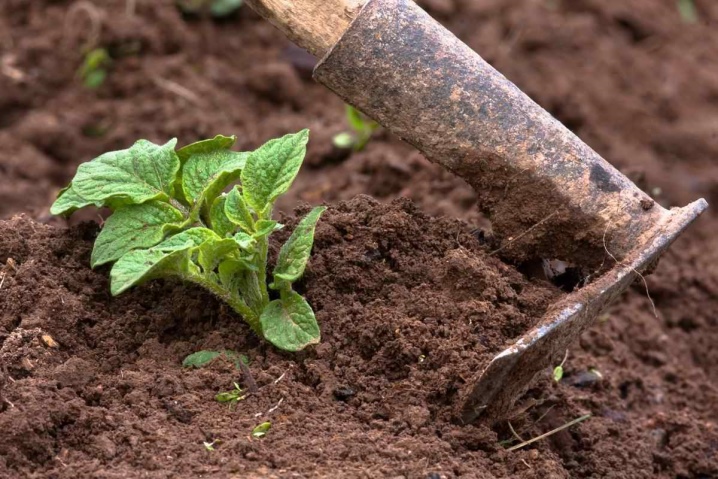













The comment was sent successfully.